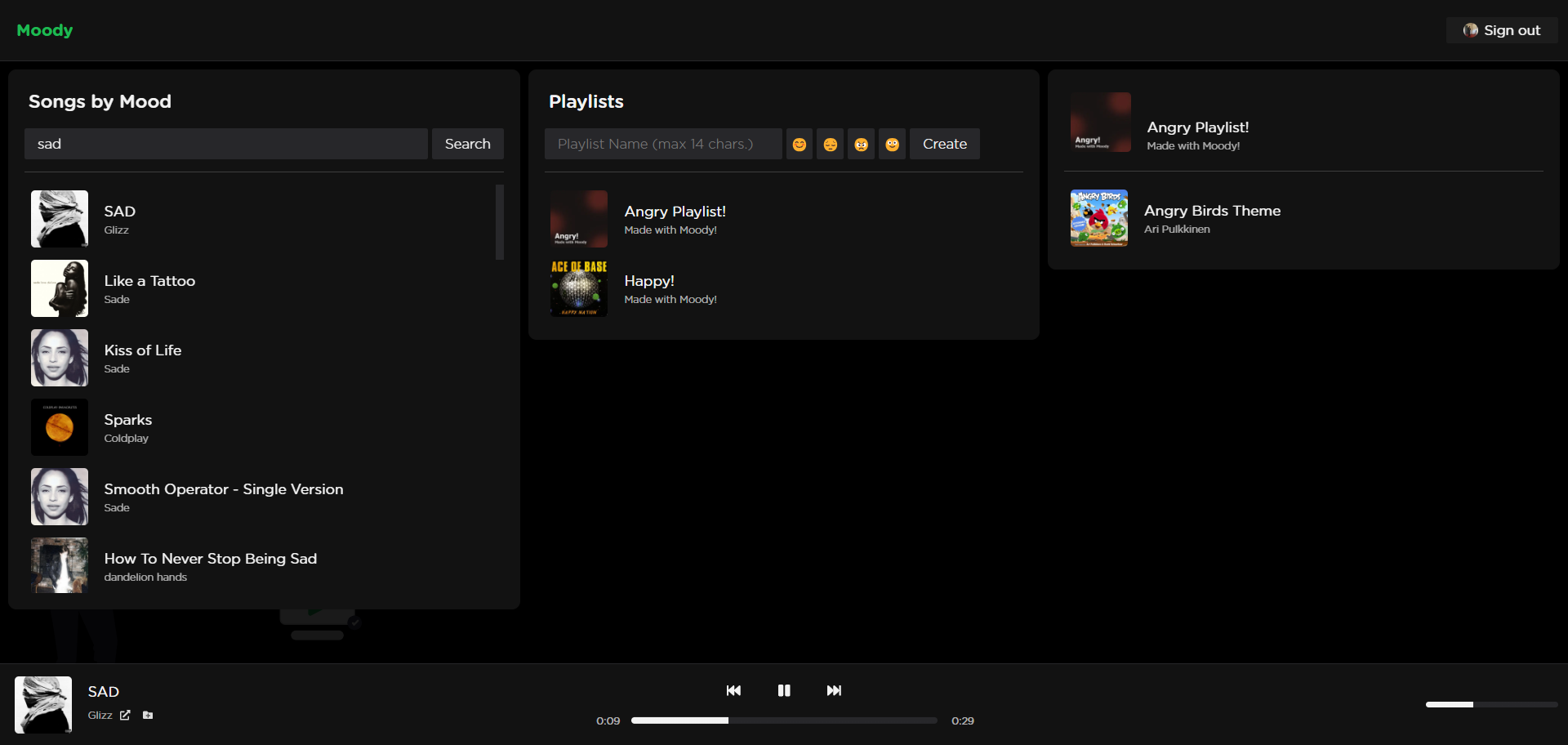Spotify Mood App
Tech stack: Next.js, Spotify API
The Spotify Mood App revolutionizes music discovery through intelligent mood-based playlist generation, leveraging advanced algorithms and the comprehensive Spotify Web API. This innovative application transforms how users interact with their music libraries by understanding emotional context and musical preferences.
The application analyzes user mood indicators through various input methods including direct mood selection, activity-based suggestions, weather integration, and listening history analysis. The sophisticated algorithm considers factors such as tempo, energy levels, valence, and acoustic features to curate perfectly matched playlists.
Built with Next.js 14, the application provides server-side rendering for optimal performance, static generation for fast loading times, and seamless API integration. The modern React architecture ensures smooth user interactions, responsive design, and efficient state management for complex playlist operations.
Integration with the Spotify Web API enables comprehensive music library access, real-time playlist creation, track analysis, and user preference learning. The application respects Spotify's rate limiting and authentication requirements while providing a seamless user experience through efficient caching and background processing.
Key features include mood-based music discovery, automatic playlist generation, manual playlist customization, social sharing capabilities, listening history analysis, mood tracking over time, and integration with external mood indicators such as weather data and calendar events.
The user interface emphasizes simplicity and emotional connection, featuring intuitive mood selection interfaces, beautiful visualizations of musical characteristics, and seamless playlist management tools. The design considers accessibility requirements and provides an inclusive experience for users with different abilities.
Due to Spotify's restrictions on unapproved applications, access is currently limited to approved users. This demonstrates understanding of API governance, application approval processes, and the importance of compliance with third-party service requirements in production applications.

